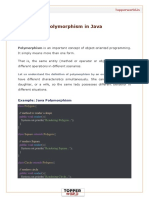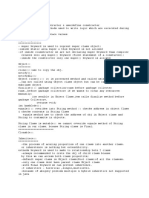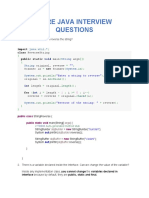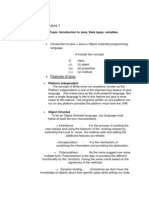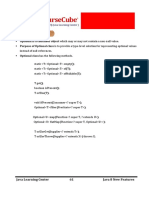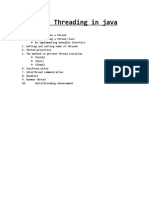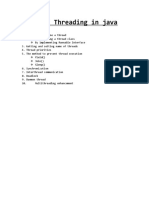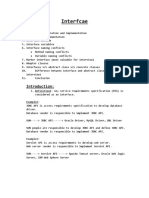0% found this document useful (0 votes)
365 views37 pagesJava Operators Overview
The document discusses various Java operators like increment/decrement, arithmetic, relational, equality, instanceof, and assignment operators. It provides examples of using each operator and exceptions that may occur. It explains the differences between operators like == vs equals(), precedence rules, and differences between integral vs floating-point arithmetic for operations like division by zero.
Uploaded by
LalitCopyright
© © All Rights Reserved
We take content rights seriously. If you suspect this is your content, claim it here.
Available Formats
Download as DOCX, PDF, TXT or read online on Scribd
0% found this document useful (0 votes)
365 views37 pagesJava Operators Overview
The document discusses various Java operators like increment/decrement, arithmetic, relational, equality, instanceof, and assignment operators. It provides examples of using each operator and exceptions that may occur. It explains the differences between operators like == vs equals(), precedence rules, and differences between integral vs floating-point arithmetic for operations like division by zero.
Uploaded by
LalitCopyright
© © All Rights Reserved
We take content rights seriously. If you suspect this is your content, claim it here.
Available Formats
Download as DOCX, PDF, TXT or read online on Scribd
/ 37







